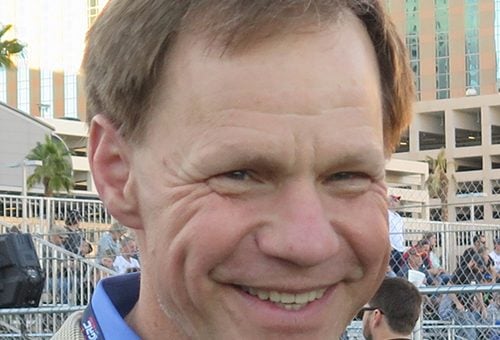WILMETTE, Ill. — As the racing season wound to a close, action continued away from the track with the same intensity and purpose.
The offseason returns with a full calendar of gatherings.
The trade shows and related programming are back at full speed. Our industry’s largest events — the SEMA Show in Las Vegas and PRI Show in Indy — will operate at full capacity and minimal constraints. Indications are for solid attendance at pre-pandemic levels.
The pause button that was featured in virtual meetings gained acceptance and became a regular part of the event media landscape. Favorable characteristics such as global reach, cost effectiveness, real-time interaction and increased exposure are cornerstone.
Ancillary business conferences have also returned to the schedule.
At the early part of the shutdown, many moved online through virtual hangouts that allowed many to participate.
Nothing tops the in-person experience. Human’s value positive connections. While reasons to attend vary — primary are the ability to discover new opportunities and ideas, network with new and existing colleagues, access industry knowledge and grow personally and professionally.
The recent Women with Drive II presented by Mobil 1 was a marquee benchmark for the motorsports and automobile industries.
Held at the Speedway Club at Charlotte Motor Speedway, the two-day event brought together many of the sport’s most successful and influential professionals to discuss current issues and trends. The inaugural event was held last year prior to the Nashville Grand Prix Indy car race and next year will be at Phoenix Raceway during NASCAR Championship Weekend.
The event benefited the Women in Motorsports North America organization. Its mission is to encourage, support and mentor more women to pursue careers in motorsports by educating them about the sport and types of employment.
WWD and WIMNA are led by experienced successful motorsports professionals — Cindy Sisson, Lyn St. James and Beth Paretta. Their accomplishments are extensive and highly regarded by all.
Support for the event was deep.
Sponsors included the biggest and best of industry suppliers, sanctioning bodies, tracks, teams and media partners. The primary focus at WWD II was placed on the needs to advance opportunities for a more diverse and inclusive environment to help grow the motorsports industry.
The format was relaxed with interactive dialogue. Attendees filled the meeting room to capacity. There was ample time to network during the breaks. The reception at the Paddock Club featured young women drivers and their cars representing numerous local and regional short-track series.
The two-day agenda had two keynotes and approximately 10 sessions. Speakers, panelists and moderators numbered more than 50 of the best in the business. Finding all in one place is not common for an industry that races coast to coast every weekend.
In total there were about 200 attendees. They were from various parts of the motorsports and automotive sectors. High-profile executives and technical staff with advanced degrees melded together in a cohesive mix.
Résumés and contact information were exchanged as many were looking to hire and others looking for opportunities.
Panel topics covered lifestyle balance, working with others, career paths, education, digital media, safety and sustainability. Findings from a recent study on attitudes toward women in motorsports were also presented.
Why are WWD and WIMNA important? There are too many reasons to count.
It is a significant growth opportunity for the industry stakeholders.
Women represent 52 percent of the population. Motorsports is one sport in which women and men compete equally — wheel to wheel, on and off the track — all working toward peak performance.
